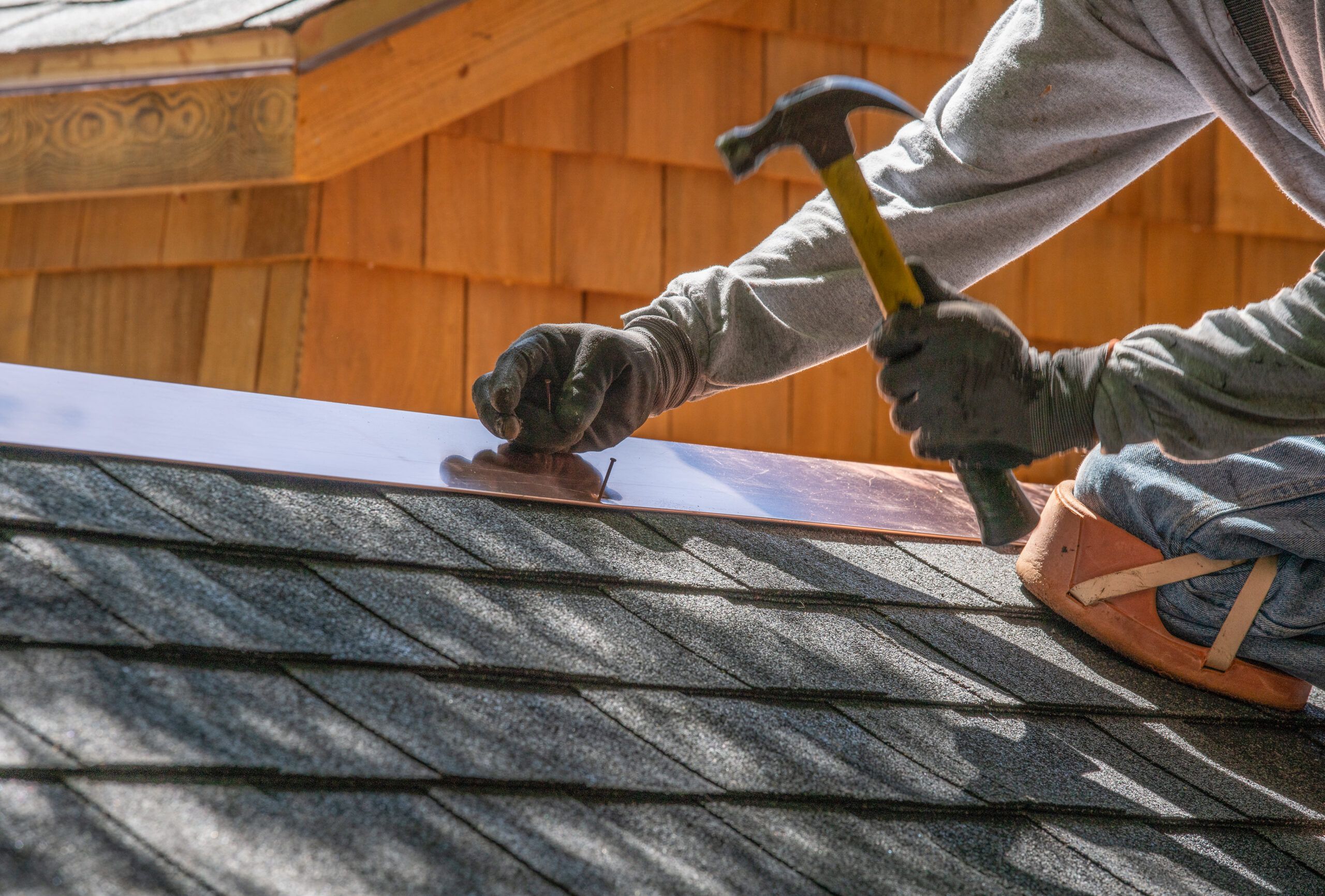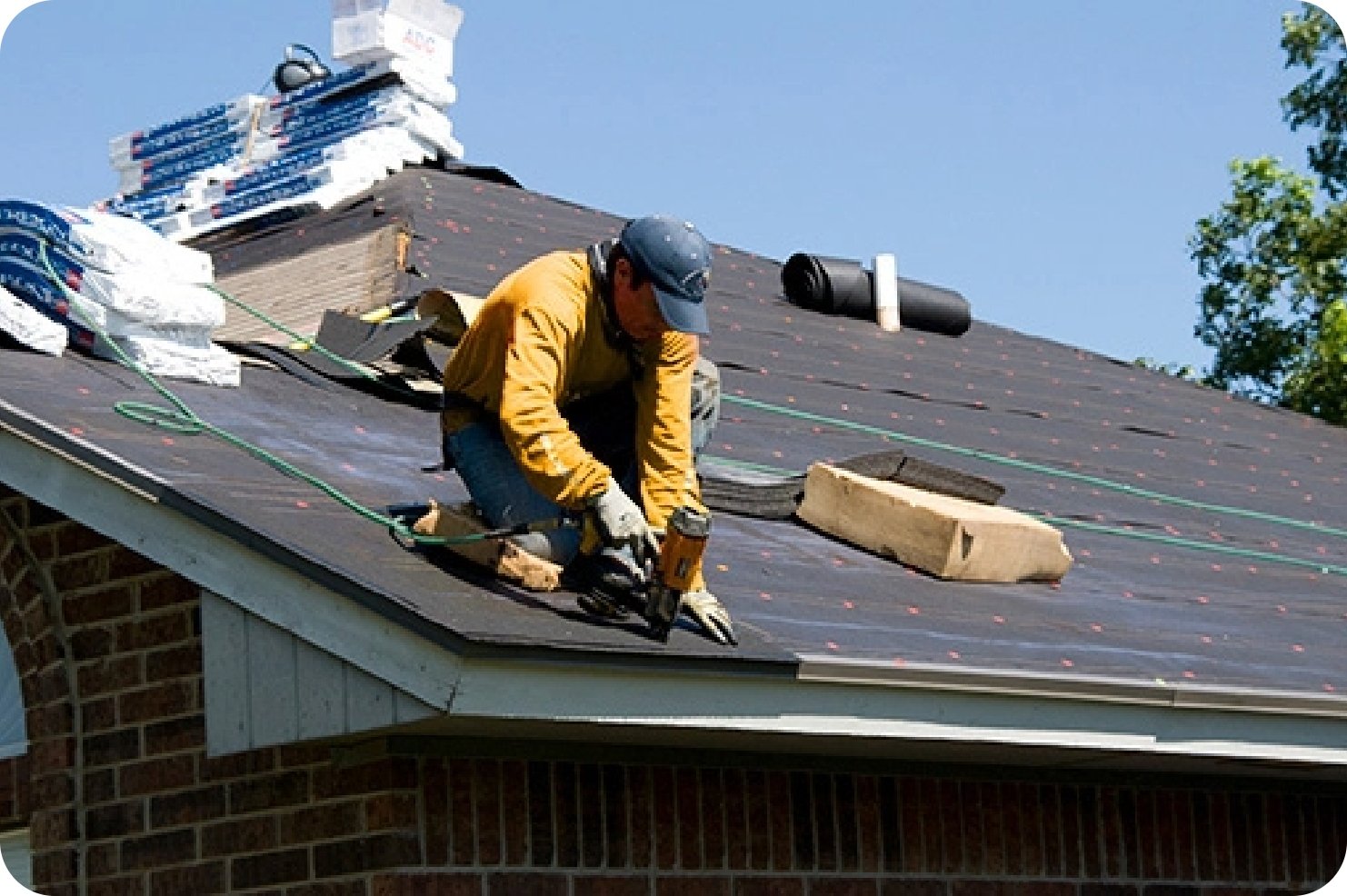Seasonal Roofing Fixing List: Prepare Your Roofing for every single Weather
As a homeowner, you know the importance of safeguarding your investment, and your roof covering plays a necessary duty because. Each period brings one-of-a-kind challenges that can influence its integrity. By following a seasonal roof repair work checklist, you can stay ahead of prospective concerns. From wintertime ice dams to summer season warm, each step is significant. Allow's discover just how proper maintenance can protect your home and extend your roof covering's lifespan.
Examining Your Roof Covering for Wintertime Preparedness
As winter months techniques, it's vital to inspect your roof to verify it can stand up to rough climate condition. When snow and ice accumulate, Beginning by examining for missing out on or damaged shingles; even a tiny concern can lead to significant leaks. Next off, analyze the blinking around chimneys and vents-- this area is commonly at risk to water intrusion.
Do not neglect to search for indicators of drooping or uneven surface areas, as these could suggest structural troubles. Furthermore, verify your rain gutters are clear; blocked gutters can cause ice dams that harm your roofing.
 roof repair
roof repair
Spring Cleaning: Clearing Up Debris and Monitoring for Damages
As soon as winter's grasp launches, it's time to take on springtime cleaning on your roofing by removing debris and looking for any type of damages. Begin by examining your roof covering for dropped branches, leaves, and other debris that can trap dampness and create rot. A clean roofing system promotes better drain and avoids mold growth.
Next, grab a sturdy ladder and meticulously examine roof shingles for cracks or missing pieces. Pay interest to areas around smokeshafts and vents, as these places are susceptible to leakages. Do not forget to analyze your seamless gutters, ensuring they're without blockages that could result in water merging.
While you're up there, seek signs of wear, like rust on metal flashing or loosened seals around skylights. If you spot any type of issues, resolving them now can save you from pricey repairs later. A little springtime cleaning goes a lengthy way in preserving your roof covering's integrity.
Summer Heat: Examining Your Roof for Heat-Related Issues
As summer heat magnifies, it's important to inspect your roof covering for heat-related concerns. Check for any tile damage, try to find indications of heat buckling, and evaluate how well your roof ventilates. Taking these steps currently can avoid bigger troubles down the roadway.
Check for Tile Damage
 roof repair
roof repair
Look For Warmth Fastening
Warmth fastening is a typical problem that can occur during the scorching summer season months, and it's crucial to look for it on your roof covering. As temperatures soar, roof products, particularly asphalt shingles, can increase and contract. This motion can lead to warping, developing unpleasant lumps or cracks. Start by inspecting your roofing aesthetically; try to find any kind of uneven surface areas or lifted sides. Pay special focus to locations around smokeshafts and vents, where buckling is extra likely to happen. It's crucial to resolve them immediately to avoid more damages if you detect any indications of warmth buckling. Think about getting in touch with a specialist if you're unsure regarding the extent of the problem or just how to fix it efficiently.
Assess Roofing Ventilation Effectiveness
After looking for warm fastening, it is necessary to examine your roof covering's ventilation effectiveness. Correct air flow assists manage temperature and wetness, avoiding damages from excessive heat. Beginning by evaluating your vents; make certain they're not blocked by debris or insulation. Try to find indications of poor air flow, like warm accumulation in your attic room or warped roof covering products. If your soffit vents and ridge vents function with each other efficiently, you may also desire to inspect. If your home really feels stuffy and overheated, think about updating to a lot more effective air flow systems, like powered attic room followers or extra soffit vents. Keep in mind, preserving great ventilation not just prolongs your roofing system's life yet additionally enhances your home's total power performance, ensuring comfort during those hot summer season.
Rainy Season Preparedness: Making Certain Correct Water Drainage
As the stormy season methods, you need to guarantee your roof's drain system prepares to deal with heavy downpours. Beginning by examining your rain gutters and downspouts, and make sure they're free from particles. Don't forget to examine the flashing and seals to protect against leakages and water damages.
Examine Downspouts and seamless gutters
During the rainy season, it is vital to frequently inspect your seamless gutters and downspouts to guarantee appropriate water drainage. Begin by looking for any visible debris, like twigs or leaves, that could obstruct the flow of water. Make sure the gutters are firmly affixed and devoid of sagging, as this can trap water and bring about leakages. Next off, take a look at the downspouts for obstructions or damage; a blocked downspout can create water to overflow, potentially damaging your roof covering and structure. Validate that downspouts straight water away from your home's foundation. If you identify any kind of concerns, address them promptly to stop costly repair work. A little maintenance now can save you huge migraines later on when heavy rainfalls struck.
Clean Roofing Surface Debris
To ensure your roof covering can handle the wet period, it's vital to clean any particles from the surface regularly. Leaves, twigs, and dirt can gather, obstructing drain courses and triggering water to swimming pool. This trapped water can bring about leakages and damages over time. Grab a tough ladder and examine your roof for any buildup. Use a roofing system rake or mop to gently remove debris, bewaring not to damage the tiles. Don't fail to remember to check your gutters also, ensuring they're clear and functioning effectively. After cleaning, check your roofing system after hefty rainfalls to identify any prospective issues early. Keeping your roof clear of particles is important for preventing pricey repairs down the line.
Check Flashing and Seals
After clearing your roofing system of particles, take a more detailed look at the blinking and seals around vents, smokeshafts, and skylights. If you notice any kind of damage, it's vital to repair or change it promptly. Ensuring these elements are in excellent condition will certainly help preserve proper water drainage and secure your home from water damages during hefty rainfall.
Monitoring and Preserving Roof Covering Seals and Flashing
While it might appear simple to forget, maintaining and inspecting roof covering seals and blinking is necessary for stopping leaks and water damages. If you spot any type of problems, it's best to reseal them with suitable roofing sealer to ensure a tight fit.
Following, analyze the blinking, which guides water far from essential areas. Examine for rust, loosened sections, or bent edges. Change it or protect it effectively to preserve its integrity if you locate any type of broken flashing. Keep in mind, even a tiny defect can cause significant issues later on.
Lastly, don't neglect to wipe any debris that could block the seals or blinking. Maintaining these elements in great form will certainly help safeguard your roof against the components and extend its lifespan.
Rain Gutter Maintenance: Keeping Water Flowing Efficiently
Considering that your rain gutters play a crucial duty in guiding rainwater far from your home, normal maintenance is vital for preventing water damage and foundation concerns. Begin by removing out particles like leaves, branches, and dirt. A clogged up gutter can lead to water overflow, which might damage your roof and siding. Use a tough ladder to reach the gutters securely, and put on gloves to shield your hands.
Following, examine for any kind of indications of corrosion, holes, or drooping areas. Fixing or replace the damaged components without delay if you notice any damages. Validate downspouts are directing water a minimum of six feet far from your foundation. If required., consider including extensions.
Finally, examine that your rain gutters are correctly sloped, ideally a quarter inch for each ten feet. This incline guarantees water moves efficiently toward the downspouts. Normal maintenance will maintain your seamless gutters functioning efficiently and protect your home from costly repairs.
Scheduling Expert Examinations for Comprehensive Care
Routinely organizing professional inspections is vital for maintaining your roofing's integrity. These experts can spot possible concerns prior to they become pricey repair services. Objective for a minimum of 2 evaluations a year-- one in the spring and another in the autumn. This timing permits you to attend to any damages triggered by winter weather condition or summer tornados.
Throughout evaluations, specialists will assess roof shingles, blinking, and air flow, ensuring everything's in top form. They'll also look for indicators of wear, leaks, or mold, which you might overlook. Setting up these assessments not just extends your roof covering's life-span but likewise provides you comfort.
If you're unsure regarding the condition of your roofing, do not think twice to call a specialist. Buying these check-ups currently can save you a lot https://barnardgriffinnewsroom.com/ll-roofing-delivering-excellence-in-roofing-solutions-for-gainesville-and-beyond/ later on. Prioritize your roofing's wellness, and you'll be well-prepared for whatever weather condition comes your method.
Often Asked Concerns
How Frequently Should I Examine My Roof Throughout the Year?
You need to check your roof covering a minimum of twice a year, preferably in spring and fall. After extreme weather occasions, check for damages as well. Normal evaluations aid you capture issues early and save cash on repair services.
What Indications Show I Need a Roof Covering Replacement Rather Than Repair?
 roof repair
roof repair
Can I Perform Roof Covering Services Myself, or Should I Hire a Specialist?
You can carry out small roof repair work yourself if you're comfy with elevations and standard tools, yet hiring a professional warranties safety and security and appropriate work. Don't take the chance of damages; it could be worth the investment for assurance.
What Are the Ideal Materials for Roof Covering Repairs in Different Climates?
For different climates, you'll desire products like asphalt tiles for moderate locations, metal roof for extremes, and clay floor tiles for warm areas. Constantly think about regional weather condition patterns to assure your roofing withstands the elements efficiently.
Exactly How Do Roofing Guarantees Influence Seasonal Upkeep Responsibilities?
Roof covering guarantees typically define upkeep responsibilities, so you'll require to evaluate the terms. If you don't maintain your roof as needed, you might void the service warranty, leaving you responsible for expensive repair services.
Seasonal Roof Repair Service Checklist: Prepare Your Roof for Every Climate
Once wintertime's grip releases, it's time to deal with spring cleaning on your roofing system by removing away debris and inspecting for any type of damages. Check for any tile damage, look for indications of warmth fastening, and evaluate how well your roof covering ventilates. If you detect any issues, consider contacting a professional for fixings to maintain your roofing system in leading shape and shield your home from potential water damage.
While it may seem simple to overlook, examining and keeping roof covering seals and blinking is necessary for stopping leakages and water damage.